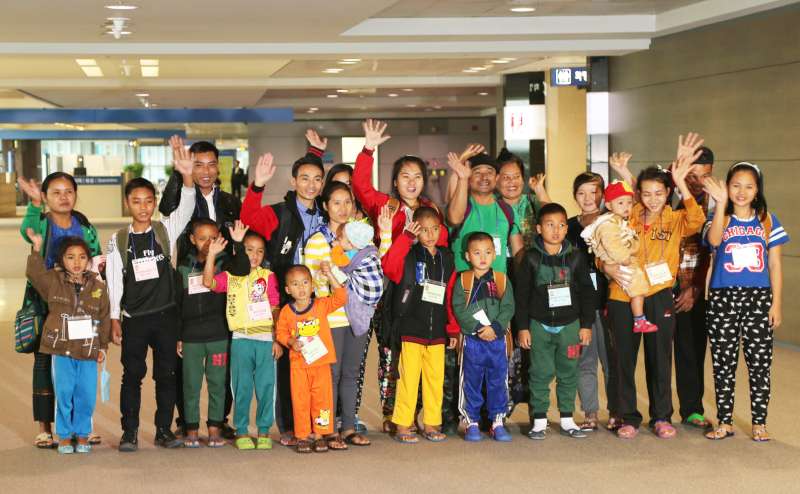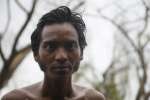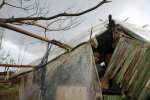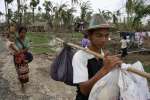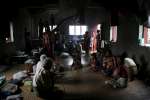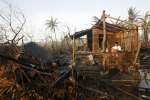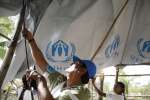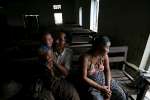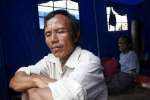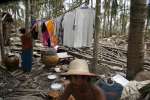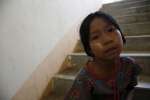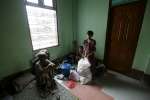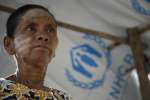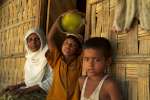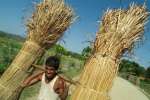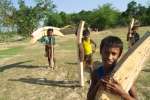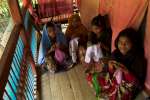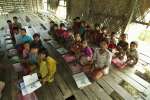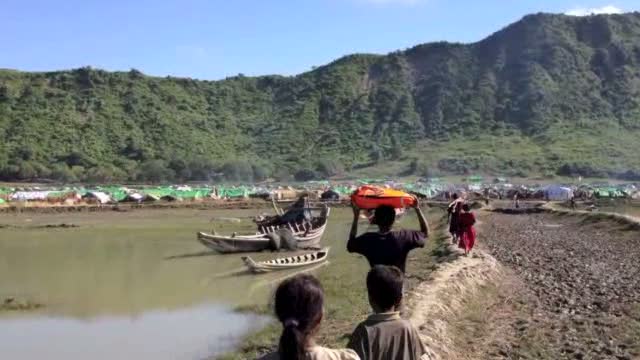- Text size
 |
|  |
|  |
| 
- عربي
South Korea receives first refugees in pilot programme
News Stories, 23 December 2015
INCHEON, Republic of Korea, Dec 23 (UNHCR) – Having learned some Korean through books and television shows to assist in their rapid integration, a first group of 22 Myanmar refugees landed in the Republic of Korea on Wednesday to a warm welcome and positive start to the country's three-year pilot resettlement programme.
Comprising four families, the ethnic Karen refugees had spent up to 19 years in Thailand's Mae La and Umpium camps. For many, moving to South Korea meant leaving behind the only home they had known, for a country of unfamiliar people, language and weather.
But the moment UNHCR told Ku Htoo that his family had been identified as candidates to resettle in South Korea, there was no hesitation.
"In Korea, I can send my children to good schools and hope for a better life for them," said the 44-year-old Myanmar refugee who arrived in South Korea's Incheon International Airport on Wednesday (December 23). "I am thankful and very happy."
Under the programme, candidates identified by UNHCR were screened by the South Korean government, which focused on finding refugees with strong potential and a willingness to integrate into South Korean society.
Since their selection was confirmed, the refugees have been learning Korean through television shows and books while teaching Korean culture and courtesies to their children, according to South Korea's Ministry of Justice.
"Today is an important step forward both for the refugees and for Korea," said Kim Young-june, Commissioner of the Korea Immigration Service. "Korea has taken a step forward in sharing responsibility as a member of the international community, while refugees have been given the opportunity to start anew as members of Korean society."
Ku Htoo fled to Thailand in 1988 amid the conflict between government troops and ethnic minorities near the Myanmar border. Life at the Mae La camp became especially difficult after 2006, when he lost his right foot in a tree-cutting accident.
Thein Zaw, who also arrived on Wednesday, said he hoped to learn proper carpentry skills in South Korea. The 34-year-old father of four children lost vision in his right eye at the age of six and has faced difficulties in finding a stable source of income in Thailand.
"Life was difficult in Myanmar because of wars and then in Thailand because we were so poor," he said. "Now, we can live like normal people in Korea."
South Korea is the second Asian country after Japan to become a refugee resettlement state and plans to receive 60 more refugees over the next two years until the pilot programme ends in 2017.
It is a significant step for a country with a relatively short history of receiving and accepting refugees. Since 1994, when South Korea started to receive refugees who arrived spontaneously, some 13,000 people have sought asylum mostly from Pakistan, Egypt and China.
"For the resettled families, today marks an important change in their lives as refugees after their terrible experiences back home and long years of exile in Thailand," said Dirk Hebecker, UNHCR's representative in South Korea. "Now a difficult road lies ahead for them to achieve full integration, which will depend largely on the hospitality of the receiving communities in South Korea."
The four families will start their lives in South Korea at the Immigration Reception Centre located in Incheon, where they will stay for six to 12 months taking basic courses in the Korean language, culture and occupational skills. The Justice Ministry said that they are likely to live around Gyeonggi Province, adjacent to the capital Seoul, as there is already an existing Myanmar community in the area.
"With time, UNHCR hopes that South Korea will expand its resettlement programme to refugees from other regions and major emergencies around the world," said Hebecker.
By Heinn Shin in Seoul, Republic of Korea
